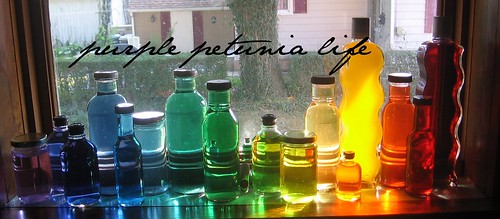 Last week presented two opportunities for community crafting, both actually solicited (I'm always trying to get people to craft with me; the dearth of craft buddies is a tragedy of the move). First, the teenage girl's group at my church, which I help advise, had a sleepover on Friday, and one of the girls asked that I bring clay. Done! A friend from the past recently moved within visiting distance, and her kids wanted to work clay with me as well when they came on Saturday.
Last week presented two opportunities for community crafting, both actually solicited (I'm always trying to get people to craft with me; the dearth of craft buddies is a tragedy of the move). First, the teenage girl's group at my church, which I help advise, had a sleepover on Friday, and one of the girls asked that I bring clay. Done! A friend from the past recently moved within visiting distance, and her kids wanted to work clay with me as well when they came on Saturday.For both of the groups, I chose to bring cone 10 porcelain clay. It fires to a lovely glistening white, so is beautiful unglazed. Since I'm not hosting a second crafting session for either group, the glazing work will be my own labor. And since I'm (perennially) time-crunched, most of the wee creations will remain unglazed and still look terrific. I've also used cone 6 porcelain clay bodies, but none of them have vitrified (turned glass-like) as well as the high-fire clay. They're still smooth and nice, but not as shiny or white.
Even if you don't have access to a kiln and pottery studio, working with "real" clay is not out of your reach. When I was in between studios in Nashville, for instance, a friend approached me about making doves for Christmas, and we just looked up "ceramics supply" in the yellow pages. The warehouse we found sold us bags of clay (most are in the $15/25# range) and would also fire for us, at a fairly low price per square inch. If you find a local ceramist who teaches lessons, I bet they may be willing to add a few of your pieces to a kiln they're firing for a small fee.
I lump my basic handbuilding tips into two categories, which overlap: (1) avoid explosions and (2) keep it together: attaching clay parts. Explosions in the kiln usually happen because trapped air within the piece expands at the extreme temperatures of firing. Thick walls are particularly problematic. I gave my groups this rule: nothing fatter than your finger. When attaching parts, an effective seal will also be carefully crafted to avoid air bubbles.
The technique for "keeping it together" with clay is called "scratch and slip". Any time you want to attach 2 things, they need to stick to something. Have you ever noticed that gluing glass or varnished wood is particularly challenging? That's because the surface doesn't provide any good "hand holds" for your paste of choice. The solution with those situations is to lightly sand the surface to provide a grip. When attaching clay, you need to provide similar good grip, though with clay, the goal is to really allow the two pieces to join and become one. Scratching both surfaces thoroughly provides the gripping surface as well as allowing an interaction between the two similar to a dovetailed drawer, though a very sloppy one: a nice tangle of shared clay. Extra stickiness (the glue) is provided by "slip". Slip is water-thinned clay. You can make a little dish of slip by adding water to some crumbled clay, stirring to a paint consistency, and brush it on both surfaces before squishing them together to extrude all air between them. I usually let the clay make its own slip by using an old wet toothbrush and scrubbing the scratched surface until it is good and muddy. Another key to ensuring a good seal is to let your clay dry s l o w l y. As it dries, clay shrinks, and two joined pieces can pull away from each other. When I attach handles to mugs, I cover them tightly with 2 or 3 layers of plastic for 24 hours, then lightly cover them, rotating every few hours, for another couple of days. When the clay dries slowly, the moisture has a chance to redistribute, so everything shrinks together. When a thin rim or handle dries fast and first, it shrinks faster than the rest of the piece and can crack. Which is tragic after all of your hard work...
I was compelled to really explain that. Okay, some photos. I love both of these because there is obviously some hard work going on.






1 comment:
Love it. I'm happy that you were able to find some crafting buddies. You do know that if I lived near you, I'd totally be there . . .
Post a Comment